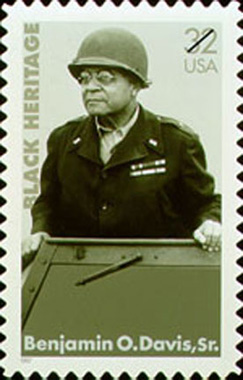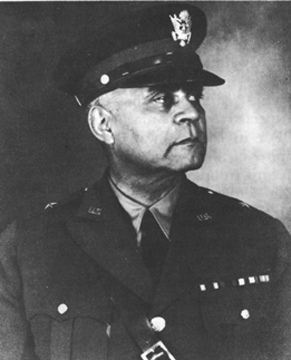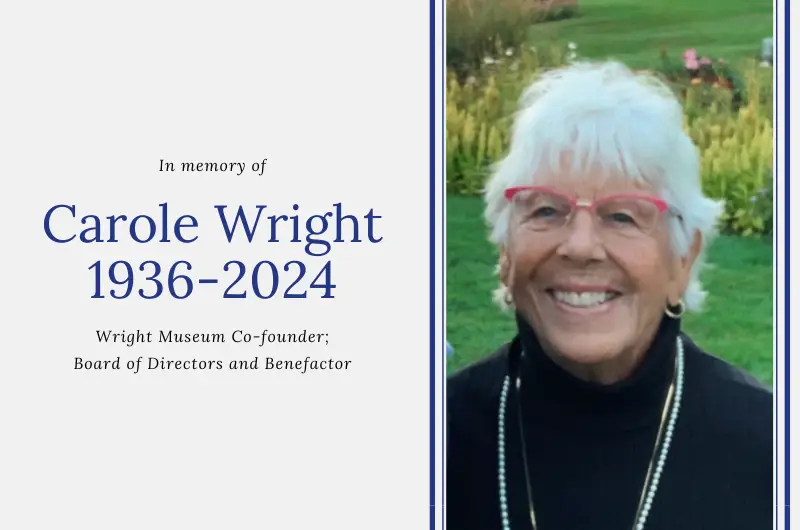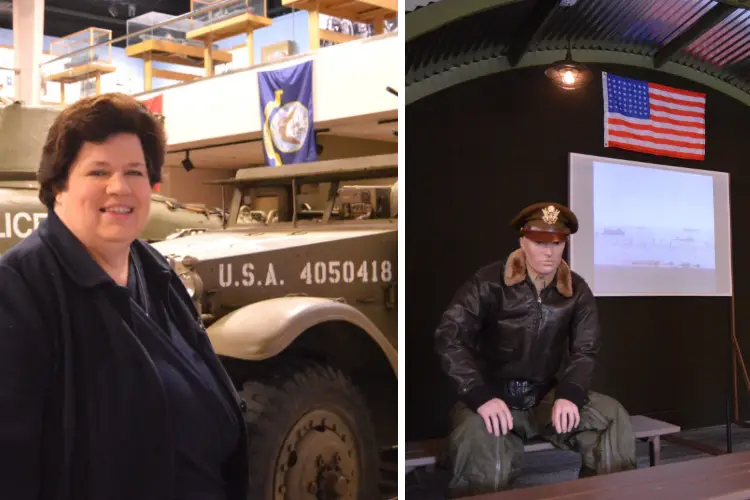The first two Black generals in the U.S. military were father and son: Benjamin O. Davis, Sr. and Benjamin O Davis, Jr. They broke barriers and were instrumental in the eventual desegregation of the U.S. military.
Benjamin O. Davis Sr. was the first Black general in both the U.S. military and the U.S. Army. He was born in 1880. His parents wanted him to go to college but instead he joined the U.S. Army in 1898.
After a temporary hitch with the 8th United States Volunteer Infantry during the Spanish-American War, he joined the famous “Buffalo Soldiers” – the 9th Cavalry Regiment – in Utah as a private. Sergeant Major Charles Young, who was the only Black officer on the base, encouraged him to take the officers’ exam and even tutored him. Davis passed and became a 2nd lieutenant in the Regular Cavalry.
Davis bounced around from assignment to assignment – mostly teaching military science and tactics at different institutions like Wilberforce University in Ohio and the Tuskegee Institute in Alabama.. He also escorted Gold Star mothers and widows to visit the grave sites of their loved ones killed in World War I. Unfortunately, the Army largely kept him from military assignments so he wouldn’t be in of command white soldiers.
On October 25, 1940 Davis was promoted to brigadier general, becoming the first Black general in U.S. history.

Davis played a vital role in World War II by serving in the Office of the Inspector General and on the Advisory Committee of Negro Troop Policies. He also inspected soldiers on the home front and in Europe to judge their morale and suggested solutions to problems they were facing. His Army superiors took his advice seriously, which helped resolve segregation-based conflicts between various units.
Davis died in 1970 at age 90. In January 1997 the U.S. Postal Service issued a stamp in their Black Heritage Stamp series to honor Davis’s service to the country.

Benjamin O. Davis Jr. followed in his father’s footsteps. He attended West Point as the only Black cadet at the academy. His fellow cadets shunned him, speaking to him only when necessary. He ate alone and roomed alone. But the other cadets didn’t comprehend Davis’s toughness and determination, as he stuck it out and graduated 35th in a class of 207 in 1936.
Davis wanted to become an Army Air Forces (AAF) pilot, but was not allowed because the military was still segregated and a Black flying unit didn’t exist. Instead, to keep him from commanding white units, he was sent to the Tuskegee Institute in Alabama to teach Reserved Officers Training. It was not long however, before Franklin D. Roosevelt authorized the creation of a Black unit for the AAF. The AAF wanted a West Point graduate to command the new unit. Davis was just the fourth Black man to graduate from the Academy and was picked to lead the group. He would go on to lead all three units that would become known as the Tuskegee Airmen.
Davis first led the 99th Fighter Squadron, which trained mostly at the Tuskegee Army Air Field in Alabama. After training, they deployed to the Mediterranean Theater where, attached to fighter squadrons, they flew combat missions against enemy ships and ground targets. They also provided air support during the Allied landings in Sicily and at Anzio, as well as for ground troops near Monte Casino.
In September 1943, Davis was recalled to Tuskegee Army Airfield to head the new 332nd Fighter Group. Davis faced resistance from racist senior AAF officers who unsuccessfully tried to prevent the 332nd from deploying by criticizing the performance of Davis’s 99th Fighter Squadron. But the 332nd forged ahead and deployed to the Mediterranean Theater, and the 99th also became part of that fighter group.
The 332nd was nicknamed the “Red Tails” because, following the customary practice, they painted their tail fins a distinctive color – in this case, red – to distinguish themselves from other fighter groups. Initially, they flew missions to support ground troops on the battlefield but switched to escorting heavy bombers deep into enemy territory in the summer of 1944.
The new 477th Bombardment Group was activated in January 1944 to fight against Japan in the Pacific Theater, and Davis was again recalled to lead it. Just as before, racist officers attempted to make the group fail during training. Though the 477th wasn’t ready to deploy until after the war ended, they fought discrimination on the home front and they proved – despite many obstacles – that they were just as capable as any other unit.

Davis began the war as a lieutenant colonel and ended the war as a full colonel. After President Harry Truman ordered the armed forces to integrate in 1948, Davis helped write the Air Force’s integration plan. He flew in the Korean War and later served with distinction in the Pentagon and overseas. Davis retired in 1970 as Lieutenant General and was promoted to full General in 1998 by President Bill Clinton. Davis died on July 4th, 2002 at the age 89.




